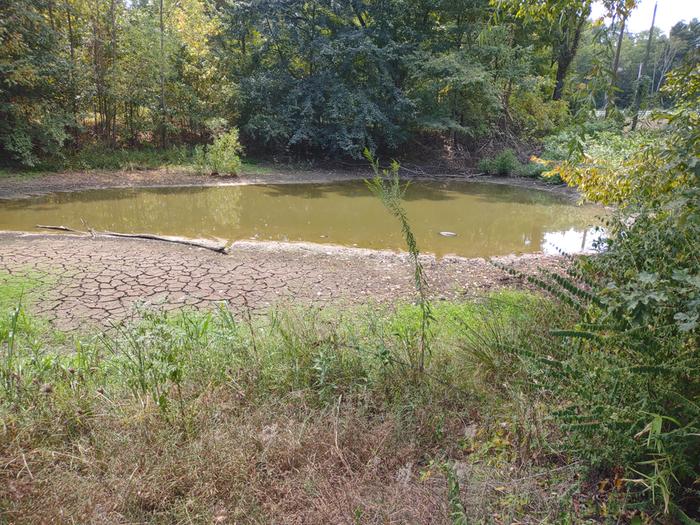
 4
4




 6
6




Invasive plants are Earth's way of insisting we notice her medicines. Stephen Herrod Buhner
Everyone learns what works by learning what doesn't work. Stephen Herrod Buhner

 2
2




- Tim's Homestead Journal - Purchase a copy of Building a Better World in Your Backyard - Purchase 6 Decks of Permaculture Cards -
- Purchase 12x Decks of Permaculture Cards - Purchase a copy of the SKIP Book - Purchase 12x copies of Building a Better World in your Backyard
 6
6





 8
8




'What we do now echoes in eternity.' Marcus Aurelius
How Permies Works Dr. Redhawk's Epic Soil Series
 6
6




pascal billford wrote: I'm a big time grower. I want at least 50+ fruit trees and 50+ nut trees and a huge amount of berries and a big vegetable garden.
Yes, not all wells are created equal. However, how you manage your property can do wonders to support a well. Slow infiltrating ponds high on the landscape and lots of natural forest are your friends in that regard. We bought a chunk of land just to be a buffer zone when we realized it was likely to turn into a huge home with grass all around it if we didn't buy it ourselves.So, fairly large amounts of Water is REAAALLLY important to me. The droughts in most of the US, are just getting worse. I've heard of wells going dry.
My neighbors dug/blasted a quarry and it fills every winter and irrigates their corn field every summer. And they sold the gravel for income. So I would think outside the box on this one. Look for natural spots on the land where micro-dams can hold the rain.I want a stable water source, even in the worst drought. and storing it in a tank isn't going to be enough: I mean a 20,000$ tank holds about 20K gallons which is about enough for 1 month of watering at the most.
Mulch is not always the best approach. They're good for sandy soil, but not so good for my ecosystem. Polycultures help. As mentioned, improving the soil helps immensely. Biochar helps. In my ecosystem, more soil and less rocks help, unless the rocks are on the surface acting as a mulch and dew catchers.Sure, I know all the basics of mulching really heavily, etc.
Yes, this is a huge issue, and the amount and timing of the rain is shifting as the weather patterns shift. The north west coast gets rain in the winter when it's too dark to grow anything, and it's too dry in the summer when we want to produce food other than apples and plums (which grow like crazy with no care). Animals are a big part of shifting calories from summer to winter.I mean, even places with a decent amount of rain here on the west coast still get very dry for about 4 or 5 months.
Visit Redhawk's soil series: https://permies.com/wiki/redhawk-soil
How permies.com works: https://permies.com/wiki/34193/permies-works-links-threads
 4
4




 2
2





 5
5




 3
3




pascal billford wrote:I really like that idea of blasting a whole in the ground to catch more water. It seems, you could probably make that really big and just make your own little pond, or a big pond! that's a really fantastic.
Invasive plants are Earth's way of insisting we notice her medicines. Stephen Herrod Buhner
Everyone learns what works by learning what doesn't work. Stephen Herrod Buhner
 6
6




Our inability to change everything should not stop us from changing what we can.
 3
3




Invasive plants are Earth's way of insisting we notice her medicines. Stephen Herrod Buhner
Everyone learns what works by learning what doesn't work. Stephen Herrod Buhner








 4
4




'What we do now echoes in eternity.' Marcus Aurelius
How Permies Works Dr. Redhawk's Epic Soil Series
 7
7




If the pond is not sealed, it may be seeping in as well as evaporating. If the goal is to have water for irrigation, both of these aren't great. But if the goal is to slow winter runoff and give it time to soak in deeply, a shallow pond can be similar to what people say that a swale can do. Both are tools for certain ecosystems, but not for *every* ecosystem.Joylynn Hardesty wrote:In regards to ponds and dry areas, another factor would be the rate of evaporation. A pond may hold water, but if not deep enough can evaporate to mud.
Visit Redhawk's soil series: https://permies.com/wiki/redhawk-soil
How permies.com works: https://permies.com/wiki/34193/permies-works-links-threads
 7
7




Nothing ruins a neighborhood like paved roads and water lines.
 6
6




I would be careful about going too "low down". We had an "Atmospheric River" a few years back and far too many houses were badly damaged by flooding. This was in places that had no living memory of flooding as well as places that were known for it.Mark Reed wrote: If I was able to do so I would buy some land low down in one of the creek valleys and get a bunch of very large tanks to fill from the creek in late winter or spring.
Visit Redhawk's soil series: https://permies.com/wiki/redhawk-soil
How permies.com works: https://permies.com/wiki/34193/permies-works-links-threads

 4
4




 4
4




Nothing ruins a neighborhood like paved roads and water lines.
 2
2




However, I've heard of some epic floods in deserts when it does rain, so even there, it pays to plan ahead and be aware of where heavy rain is likely to flow.Joseph Lofthouse wrote:Choosing to live in a place with more reliable and consistent rainfall may be an easier path for water security than choosing, like I do, to live in a desert.
Visit Redhawk's soil series: https://permies.com/wiki/redhawk-soil
How permies.com works: https://permies.com/wiki/34193/permies-works-links-threads












 1
1





'What we do now echoes in eternity.' Marcus Aurelius
How Permies Works Dr. Redhawk's Epic Soil Series
 2
2




Nothing ruins a neighborhood like paved roads and water lines.
 1
1
















'What we do now echoes in eternity.' Marcus Aurelius
How Permies Works Dr. Redhawk's Epic Soil Series
 3
3




yet another victim of Obsessive Weeding Disorder

|
Oh darling! You make that outfit POP! -- tiny ad
The new kickstarter is now live!
https://www.kickstarter.com/projects/paulwheaton/garden-cards
|







